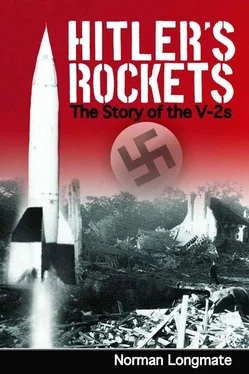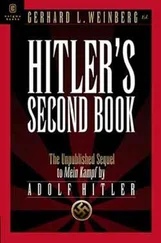May 1940 was also the month in which Winston Churchill became Prime Minister and took into power with him his private crony and confidant, Professor Lindemann, as his scientific adviser, appointing him to the sinecure post of Paymaster-General. Lindemann’s elevation meant that science was now represented at the very highest level of government, and that the voices of scientists, at least if they enjoyed Lindemann’s highly selective approval, would be heard in Downing Street; but for this there was a high, almost disastrous, price to be paid. Lindemann was a bigoted, mean-minded, grievance-treasuring, malicious snob, and his German accent – he had been born in Baden-Baden in 1886, the son of a very wealthy German engineer who later became a British citizen – was all too likely to pour into Churchill’s uncritical ear supposedly objective advice fatally warped by personal prejudice. It was typical of Lindemann that because he disapproved of the man his sister had married he refused to speak to her for the remaining forty years of his life, and his professional life was riddled with similar small-minded vendettas. Cold and aloof to outward appearance, beneath the surface, he was, according to an admiring biographer, ‘a man alive and raw and quivering with authentic passions, nourishing love and hate with an intensity rare among men, revengeful in thought yet vulnerable to slights… his vision was somewhat narrow and his obstinacy impervious to argument’. His own judgement as a scientist too was often spectacularly faulty, and R. V. Jones, while working as a research student under Lindemann, ‘found that he had been leading me up a garden path because he had made some erroneous assumptions he had not troubled to check’. When he disliked anyone – and he disliked a great many people – he was liable to disregard whatever they said, however soundly based; equally, and almost as misleadingly, he was intensely loyal to his friends and would unwaveringly support them even when wrong. His feud with the other major figure offering the government scientific advice, Professor Henry Tizard, had become notorious even before the war and was to have dire consequences during it, for in 1942 Tizard was virtually driven out of Whitehall back into academic life, so that for the whole ‘rocket period’ Lindemann reigned supreme and unchallenged. His response when R. V. Jones (for whom, as a former pupil, he apparently retained a grudging respect) attempted, with Tizard’s agreement, to make peace between the two, was typically ungracious and small-minded: ‘Now that I am in a position of power, a lot of my old friends have come sniffing around!’ Equally revealing was his response to congratulations when, in 1941, Churchill created him a peer, and he took the name of that charming Oxford river, the Cherwell, ‘a gleeful sneer’, and the comment, ‘“Of course… it wouldn’t be any use getting an award if one didn’t think of all the people who were miserable because they hadn’t managed it.” ’
All allowances for Lindemann made, he remains, on the evidence of the documents as well as the recollections of those who knew him, a singularly unpleasant figure who was almost always wrong. His presence in Whitehall was generally disliked, and one former junior minister in Churchill’s wartime government expressed a widespread view when he remarked in a broadcast long after the war that in his view the Germanborn scientist was the most repellent individual ever to have disgraced British public life and that he ‘seemed to have crawled out from under a stone’. In the story of the rocket, however, as the Prime Minister’s private, as well as official, scientific adviser he was to play an important part.
As one country after another was overrun by the Germans, and an increasing number of decent German citizens came to hate their own government, the problem for British intelligence became less one of too little information than of too much. Into Branch AI (I (c)) at 53 Broadway poured a steady flow of facts, rumours and – most troublesome of all – half-truths, from a variety of sources: the code-breakers at Bletchley, the ‘Y’ Service, the London ‘Cage’ where especially important prisoners were questioned, the numerous other centres where enemy prisoners or suspect arrivals from Europe were interrogated, the reports from agents on the ground in Europe, including an increasing number of slave-labourers, eager to harm the Germans but wholly untrained in intelligence work, and, probably most important of all in detecting new enemy weapons like the rocket, the Central Interpretation Unit, Medmenham, a large country house in Buckinghamshire where every week the thousands of photographs taken by RAF reconnaissance aircraft over Germany and Occupied Europe were scrutinized. As a result of the personal contacts he had established, Dr Jones was uniquely placed to assess the value of the reports that crossed his desk, for he often knew personally the pilot who had flown a particular sortie or the official who had compiled a specific report. Thanks to Lindemann’s sponsorship – though this probably did him little good in the growing number of quarters where Lindemann was already detested – he had as early as 1940 found himself at a toplevel meeting addressing the Prime Minister on the threat from German navigational beams. In February 1941 he became Assistant Director of Intelligence (Scientific Intelligence) at the Air Ministry, a post he combined with that of being scientific adviser to MI6, and thereafter his name became even better known in government circles, increasingly carrying an authority far greater than his rank suggested.
On 15 May 1942 a Photographic Reconnaissance Unit pilot in a Spitfire fitted with long-range tanks, on a routine mission to cover Kiel, also brought back some pictures showing a new airfield and buildings on the island of Usedom. The ‘second phase’ interpreter at Medmenham, concerned with developments not requiring immediate operational response, duly noted ‘heavy constructional work’, in the shape of large circular earthworks like open rings. The ‘third phase’ interpreter, to whom the pictures were then passed, a WAAF officer called Constance Babington Smith, whose job it was to look for long-term trends on the enemy side, mentally registered the name Peenemünde, which was new to her, before filing the photographs away. The Scientific Intelligence Branch of the Air Ministry, where it might have produced some response, was not informed.
The section headed by Dr Jones was in fact badly overworked. Although it had expanded since 1939, he was still one of only five professionally qualified people trying to keep track of evidence of forthcoming changes in German weapons and equipment in the torrent of paper, amounting to an average of 150 foolscap pages, which descended upon them every day. On 20 November 1942 – a month after the Germans’ first successful test of an A-4 – he wrote to his immediate superior, the Assistant Chief of Air Staff (Intelligence), pleading for more staff:
There is an extreme danger that something vital will be missed. In view of Hitler’s recent statement that German inventive genius has not been idle in developing new weapons of offence against the country, [2] In his speech in Munich on 8 November 1942, during the annual celebration of the unsuccessful Nazi Putsch of 1923.
we cannot afford to relax our watch as we have been forced to do…. Unless some relief is forthcoming, the present Assistant Directorate cannot accept responsibility for surprises which are likely to be sprung upon us by the enemy without the timely warning which has been achieved in the past.
Dr Jones had always believed that a few outstandingly able recruits were more valuable than an army of indifferent intellects, not least because the best way of ensuring that one piece of information was correlated with another was the mind and memory of a single individual. His appeal rapidly resulted in his receiving some first-class reinforcements, including a physicist with pre-war industrial and defence experience who spoke German, French, Dutch and Russian; a former RAF intelligence officer with a science degree; and a professor of mathematics, appointed to his chair at the age of twenty-nine. A key position was that of Dr Jones’s assistant, Charles (later Sir Charles) Frank, an Oxford contemporary of his own, and a chemistry specialist, who had worked for two years in Berlin. ‘A theorist’, in Dr Jones’s judgement, rather than ‘an experimenter’, he had nevertheless, while in Germany, done a little unofficial spying on German radar developments at his friend’s request, and had finally joined him at Broadway in November 1940. Charles Frank’s special role was to study closely but critically the material that flowed into the office, including the often long but rarely very informative transcripts of the interrogation of prisoners of war, and the shorter, but not necessarily more reliable, telegrams that arrived from British representatives abroad.
Читать дальше






![Traudl Junge - Hitler's Last Secretary - A Firsthand Account of Life with Hitler [aka Until the Final Hour]](/books/416681/traudl-junge-hitler-s-last-secretary-a-firsthand-thumb.webp)





